How to make UMEBOSHI
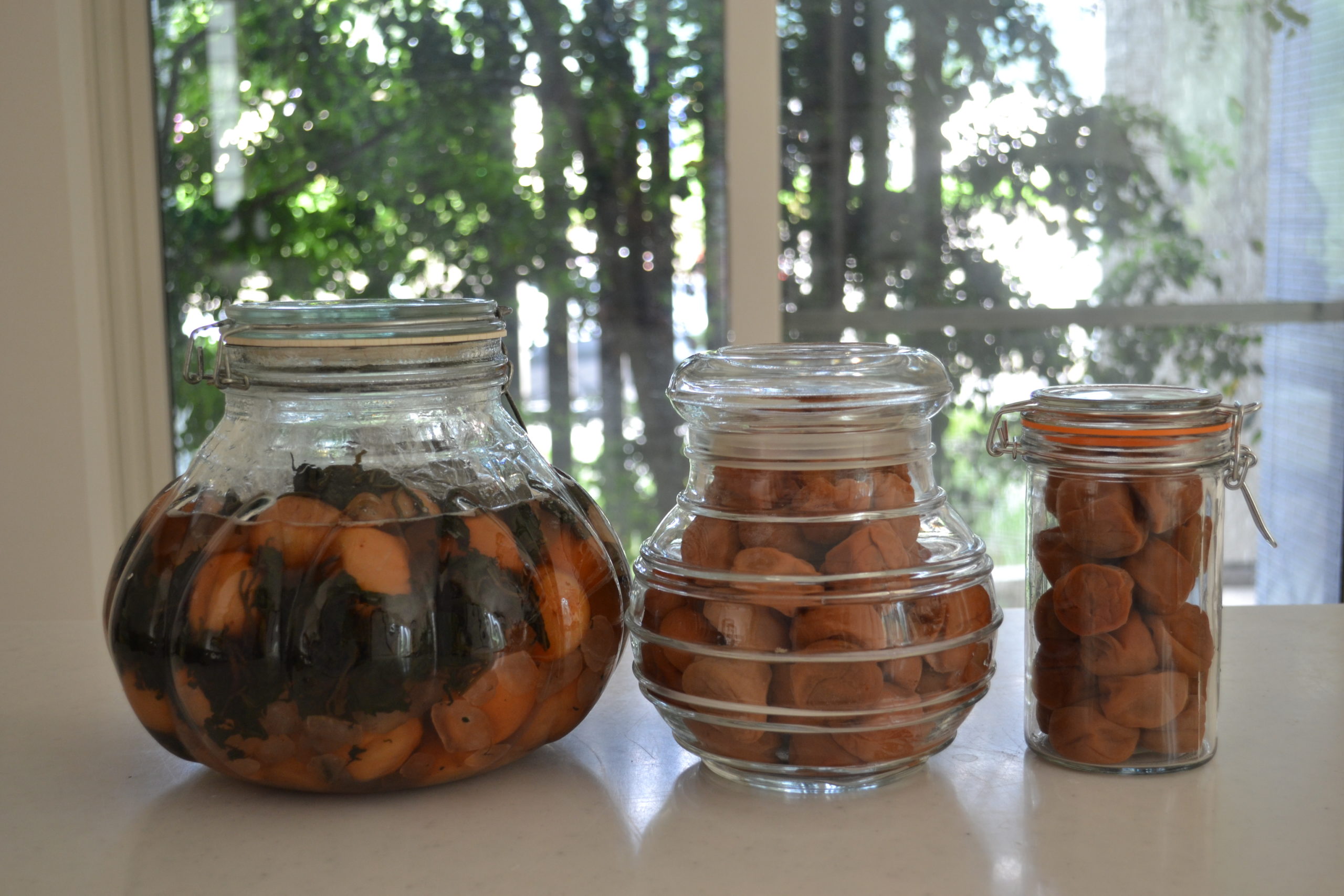
What is Umeboshi?
Umeboshi is a Japanese SuperFood!
Umeboshi, the salted and fermented Japanese plum, is famous for its extreme salty sourness.
It may sound strange, but we enjoy the sourness with the painful facial expressions(>ж<;)
And, it is undoubtedly an acquired taste.
It has been an essential part of the Japanese diet for centuries.
It is greatly appreciated for its health benefits, anti-bacterial effect, and used natural preservative.
Umeboshi is definitely an indispensable food in our daily lives.

Anti-bacterial effect
Japan has very hot and humid summers (with temperatures sometimes reaching 35 °C or above), so we need to keep the food in an appropriate condition.
Any food can go rancid in several hours under the high temperature and humidity.
Umeboshi keeps the food fresh with its anti-bacterial effect.
So we often put it in the Bento lunch box, especially in summer.
It has been used as a natural preservative for centuries.
The Japanese most simple lunch would be Onigiri. Put Umeboshi in Onigiri (rice ball) as filling. Basically, steamed rice tastes nothing, so we need something salty to eat with. Umeboshi is the best accompaniment with steamed rice.

Or just put it right on top of the rice of a Bento lunch box.
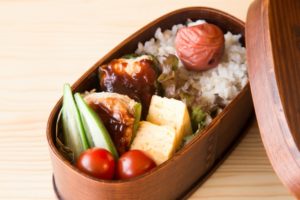
My Bento never went bad, thanks to Umeboshi!
It sounds like a granma’s tip, but scientific studies show that Umeboshi prevents growing bacteria. The citric acid containing in Umeboshi has disinfected effect.
But don’t take that Umeboshi keeps food, like forever!
It would be best if you ate your lunch at lunchtime. Please don’t keep it for dinner.
Health benefit
Even though it is known as a Japanese superfood but, what exactly is the excellent effect?
Are there any good reasons to overcome the complex taste?
The distinctive tartness of Umeboshi is derived from citric acid.
Umeboshi contains the highest concentration of citric acid of any fruit.
Even a small Ume contains two to three times as much citric acid as a lemon.
And, this citric acid does good things for your body.
First of all, saliva is secreted by eating Umeboshi. Human saliva also has the effect of killing food poisoning bacteria, as well as outer anti-bacterial effect.
So a double bactericidal effect is expected.
Second, citric acid suppresses the overproduction of lactic acid, which is said to cause fatigue. So, by eating Umeboshi, fatigue is less likely to accumulate.
Third, Citric acid enhances the bioavailability of minerals like calcium, allowing your body to absorb them better.
In addition, Umeboshi is an excellent source of polyphenols, which help reduce the risk of diabetes, help lower blood pressure, and prevent the arteries hardening.
It has been recently found that heating umeboshi produces vanillin, a chemical that helps to restrict the bloating of fat cells, providing potential support for people trying to control their weight. S
One potential con is the high sodium content. However, this makes umeboshi an effective way of fight against the dangers of heatstroke during the harsh Japanese summer.
Actually, people during the Heian Period (794–1185) used umeboshi as medicine.
An Umeboshi a day keeps the doctor away!
How to choose Japanese plum
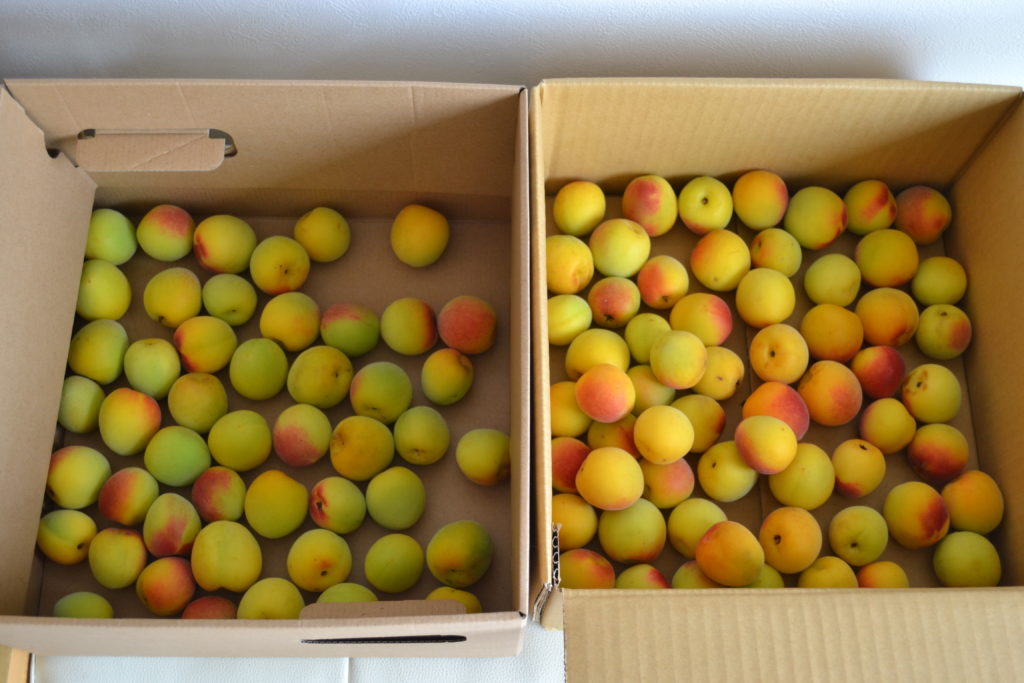
These are from our neighborhood area, and this specific variety is called Nanko-bai (南高梅,) the best quality of Ume we can find in Japan.
Cost me $35 for 5 kg.
First, separate the green plum and the ripe plum.
Green plums are for Umeshu, and Ume syrup, as you can see in my previous video.
The ripe plums are using as Umeboshi. It looks yellowish and smells really good, and it smells just like a fruit, so I don’t know where the sourness comes from? But surely, the sourness would be generated during the pickled process.
You can give it a go for this yellowish and a little bit soft-to-touch plum. Leave the under-ripe plums for one or two days more. Put them in a cardboard box for a couple of days until it looks yellowish and smells sweet.
How to make Umeboshi : Pickling
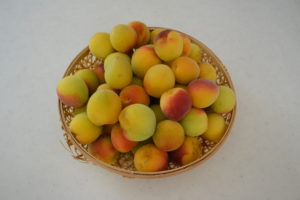
The ripe plums are using for Umeboshi.
It looks yellowish and smells really good, and it smells just like a fruit, so I don’t know where the sourness comes from? But, surely, the sourness would be generated by pickling.
You can give it a go for this yellowish and a little bit soft-to-touch plum.
Leave the under-ripe plums for one or two days more. Put them in a cardboard box for a couple of days until it looks yellowish and smells sweet.
Rinse under the cold water and pat dry.
Remove the stem with a wooden skewer. Be careful not to scratch on the surface. If your plum has a scratch on the surface, there will be mold growth.
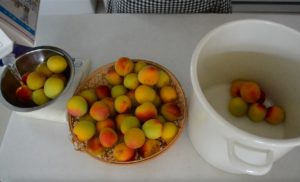
In a small bowl, put some of the plums, and toss in the alcohol to sterilize.
This alcohol is Shochu, leftover from Umeshu, contains 35% of alcohol.
You can use any alcohol which has no strong flavor to it. Food-safe sterilizer is good to use.
After tossing the alcohol, place it in the container.
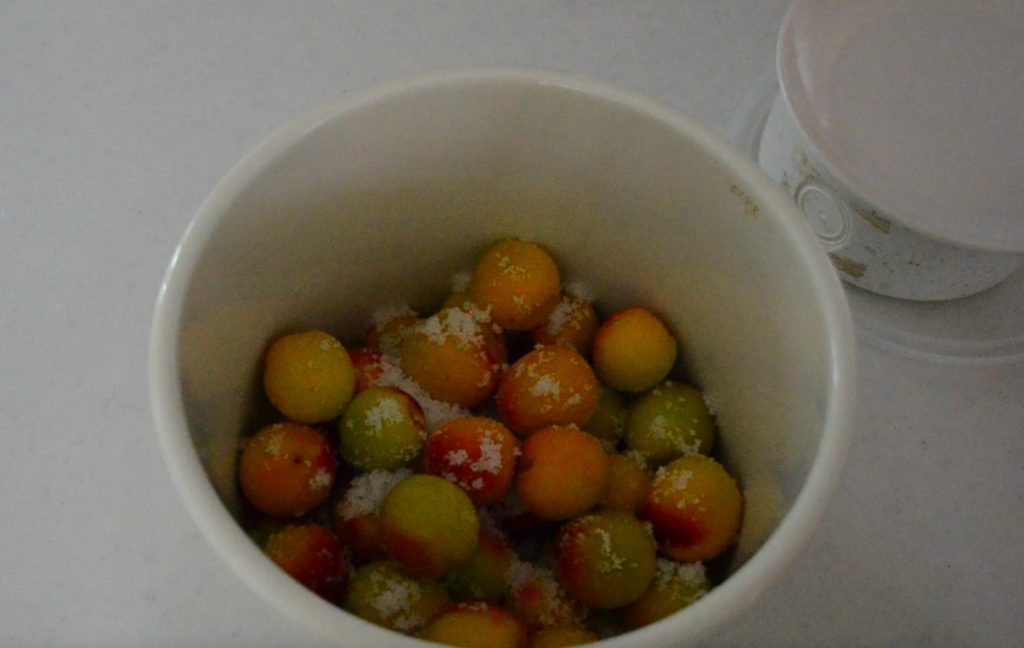
The container should be enamel or glass, or anything Acid-resistant materials.
The container, dish, and weight are also sterilized with boiling water and a sterilizer.
At this point, you should weigh plums to calculate the salt you need.
Place them in a single layer and sprinkle 10% to 12% of salt.
10 is the minimum amount of salt and is challenging, so I added 12%.
Because 10 to 12% salt is not enough to prevent growing mold.
If you don’t want to fail, add 15 to 18% of salt.
Repeat the process and alternate plum and salt.
The top layer should be a little bit more amount than the lower layer.
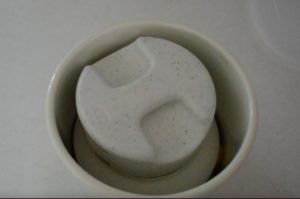
Place a sterilized dish on top, put a 2 kg weight on top.
If you don’t have a weight, you use canned beans or water instead.
What we are doing here is pressed the plum and draw out the moisture.
The next day, check the other Umeboshi, and if it is ripe, add to the container with 10% to 12% salt.
And repeat the process until all the plums are used.
How to make Umeboshi : Sun-drying
Now we got to wait until the rainy season is over, and then we sundry.
Leave it a cool dark place.
Check the container every once in a while if there is growing a mold.
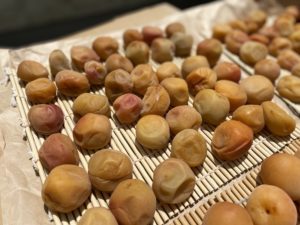
Pick up the day you can sun-dry Ume for three days in a row.
In the morning of the first day, place Ume on the sushi mat or bamboo tray.
I used to have a huge bamboo mat for Umeboshi, but I don’t want to keep it all year long just for three days of sun-drying.
Place them on the bamboo tray and sun-dry until noon. Flip it over and continue sun-drying for the rest of the day.
Take them inside before sunset.
The second day is a little bit cloudy but with enough sunlight to sun-drying.
Flip them over at noon and continue sun-drying for the rest of the day.
Take them inside the same as the first day.
On the third day, we are going to sun-dry in the day light and leave it all night long.
It is said that the night dew makes the skin of the Umeboshi soft and even tastier.
How to store and age Umeboshi
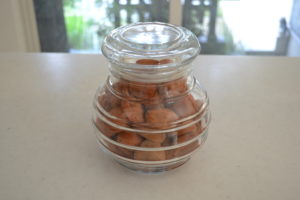
For the simple Umeboshi, see we are just transferring it to a sterilized glass container, and we will leave them for aging at a cool dark place for at least three months to a year.
Now we are going on to the aging stage.
The Umeboshi is really salty at this point, but after the aging, it tastes milder, and the taste becomes comfortable.
